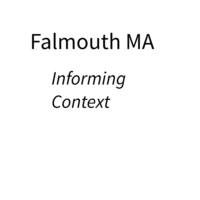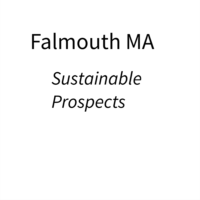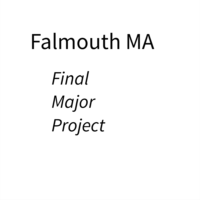This project was not conceived to resolve on to a book based surface and therefore during the module the majority of time has been spent on refining the work for resolution as an installation within a gallery space. I felt it was important to allocate some time to exploring how the project might resolve on other surfaces as a way of validating the decision to present the work as an exhibition.
For the Group Critique with Victoria and other cohort members (Chris Northey, Philip Singleton and Jo Sutherst.) I presented both the layout for the book dummy and the EU Withdrawal Agreement Intervention piece.
I presented the book layout first and Victoria provided the following feedback
- The Book needs a cover as I was only presenting the internal content
- Placing the text at the front of the book Victoria felt was a very hard introduction for the reader and she suggested that the text was moved to the centre of the book.
- The graphic of the coastline was good and should be kept at the front but separated from the text and place the graphic on page 2 or 3 of the book.
- It was suggest to look at the start of other photobooks to see how they use limited text and space to provide a soft introduction to the work.
- The portrait fold out pages Victoria felt would present a production challenge and for the dummy she suggested gluing them in after the rest of the book is printed. To allow the book to fold flat she suggested printing the book with two addition blank pages for each portrait image. These would then be cut out and replaced with the folded portrait image. This would allow the final book to fold flat.
- Consider using 1 different type of paper for the folded images to provide tactile interest to the reader.
- Added credits to the book.
- A couple of copies might need to be printed to allow for experimentation with the overall construction of the book.
Other members of the group asked questions on the construction of the fold-out images and the use of text in the book. Potentially considering using a multiple column layout to make the text more readable in a landscape orientated book.
I felt the feedback on the book was constructive and provided a clear direction that would allow the project to be resolved in printed form however it would only allow me to present a subset of the overall content from the exhibition and would prevent the reader from viewing the images in overall context something that is possible in the gallery space.
I then presented the EU Withdrawal Agreement Intervention as I was explain the concept to the group it was evident that the work was less resolved than the book and they found it difficult to understand my intent with the work. Though I did get some useful feedback.
Victoria commented that working with the large volume of printed material in Edmund Clark’s war on terror had been problematic and that is why only limited amounts of the redacted text had been included in the book. She suggested experimenting with just one article from the agreement to present a more manageable surface. Secondly the green of of the alterations in the version I used she felt was a further distraction.
The group felt the text swamped the images. One suggestion was to shrink the size of the text so that multiple pages of text fitted on to one page resulting in a better balance between text and images. I considered this reasonable feedback as I sensed when presenting the work that the concept had not delivered inline with my expectation when I was creating the work. This exploration is another example within this project where I am using scale to emphasis one piece of information in relation to the other. The landscape in all of these pieces is the one constant reference point as I consider the landscape to be the enduring element agreements in comparison are transitory even though from a human perspective we might invest what feels like a significant amount of time it is small in relation to the time the environment has existed and been shaped by the passage of time.
My feedback on the work presented by other cohort members is summarised below:
- Jo Sutherst shared the images from her project on the self and how people try to alter their appearance to meet expected norms. The book concept was at a very early stage of development so it was difficult to comment on the construction methods. The images convey a powerful message by using a single sitter in every image namely Jo herself. Though the fact that different pages of images use different different image orientations becomes distracting after a while. I think it would be better to select a single aspect ration and use that consistently through out the publication. Maybe using the passport grids as a reference point. The working is commenting on the fashion and cosmetics industry and therefore could consider drawing from the layouts we find in fashion magazines to draw attention to the obsession with manipulation of the face through different methods.
- Philip Singleton shared his zine for his Pause Project and Birmingham Dust aspect of the work. The zine was a well constructed book with careful consideration clearly having been given to each aspect of the finished product. The bifold in the zine making use of a different type of paper was a nice touch. The map showing the location of each of the building helped provided the reader with context. I was less sure about the white space around some of the images in the zine as all of the other elements had clear purposes. Overall I felt the zine achieved the outcome Philip had assigned to it.
- Chris Northey shared the layouts for his book dummy as a limited edition publication to support his exhibition. The book has a consistent layout running through each of the pages shared using tracing paper pages to initially obscure the image each of those pages contains a quote. The intended construction of the book was punched pages bound together by a ribbon. This construction method reminds me of a loose leave scrapbook of collected images. This construction method could mean that the book has a limited live before it starts to age. Chris could use the colours of LBTQ+ for the binding ribbon to reference the queer identity theme explored in the book. The use of upper case text is a contra visual reference to the softer nature of the tracing paper and the images contained within. The cover using a grey geometric structure which is a hard form does not give the reader an indication of the contents of the book. In summary I felt that adjust the elements of text and front cover would bind the book together as that the current time these elements do not appear to work in harmony.




